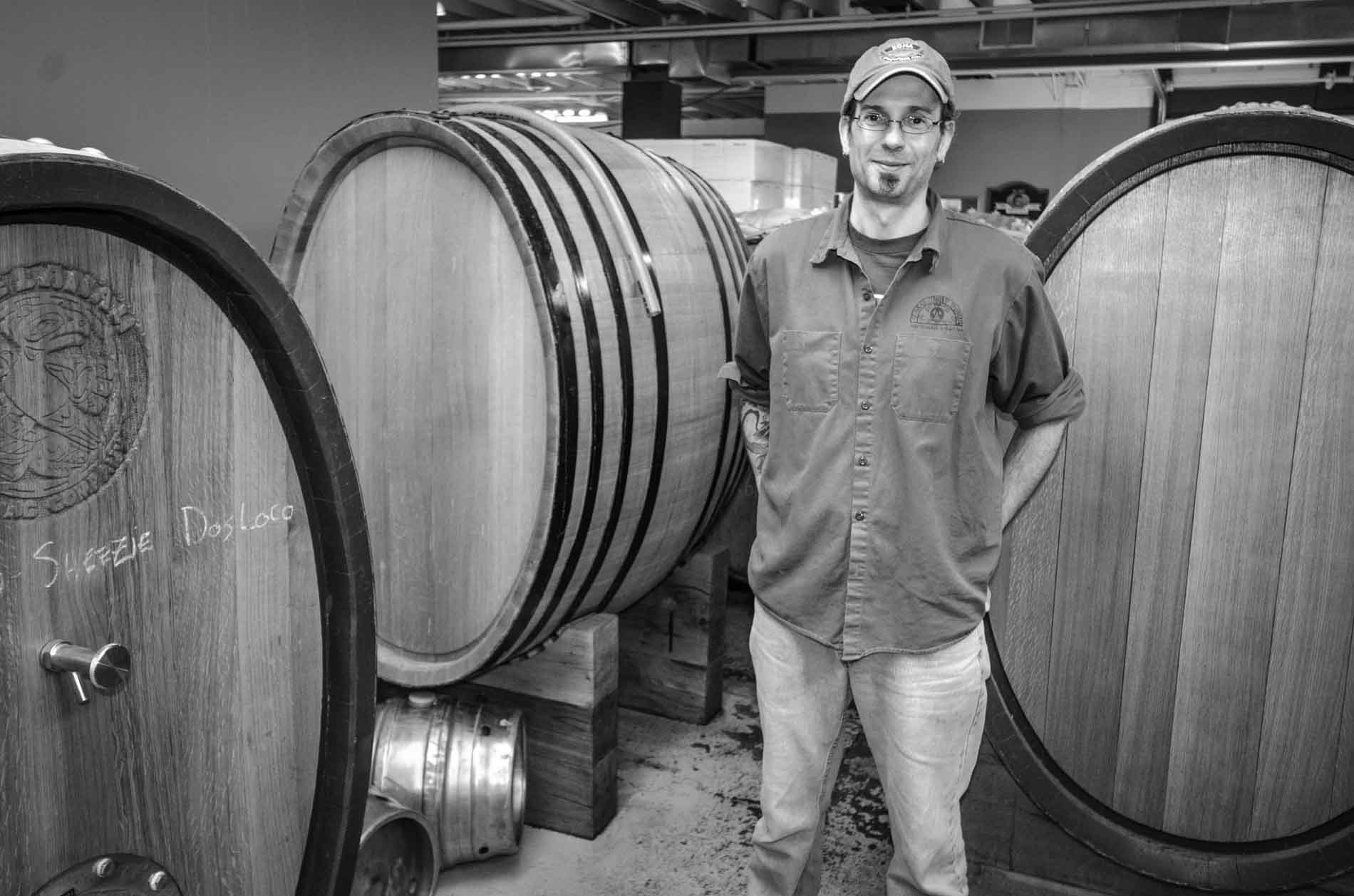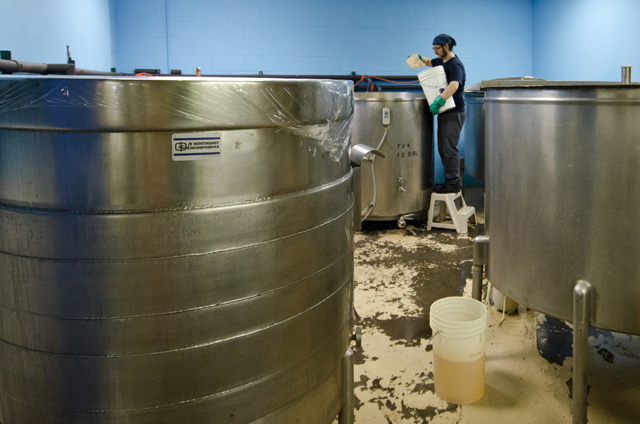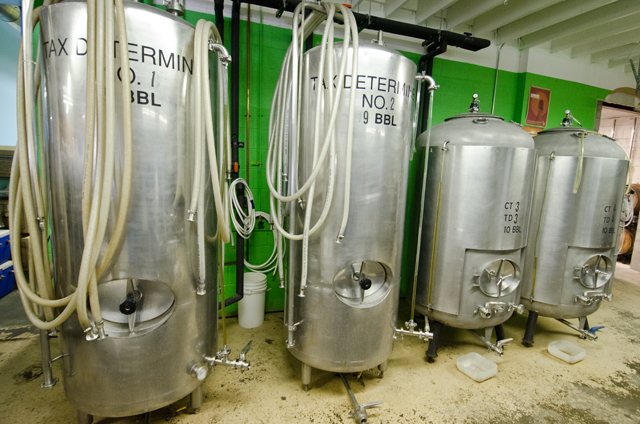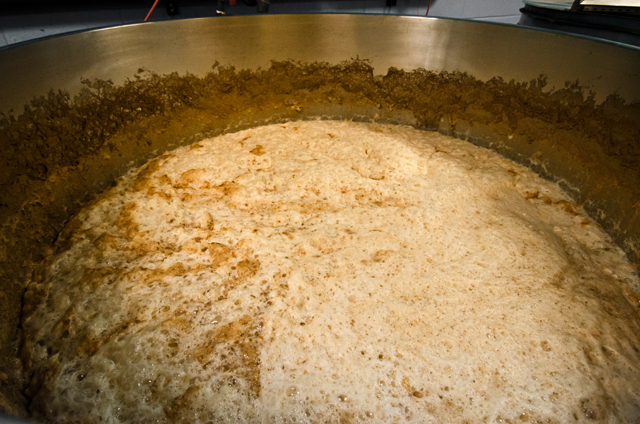Choosing Michigan breweries to visit on my tour was no easy task. Eighty-two options were spread out across the state so I decided to concentrate my efforts on several regions since I was going to be visiting family and friend’s in-between brewery tours and interviews. This narrowed down my options to Metro Detroit, Grand Rapids on the west side of the state and Traverse City, which lies on the edge of Grand Traverse Bay in the northwest section of the lower peninsula.
I arrived in Michigan on a red-eye flight at 5:30am and was greeted by brisk temperatures and a sticky layer of snow clinging to every tree in sight. My father picked me up and we crept down the highway towards the Irish Hills of Brooklyn where my parents live on Lake Columbia. Breakfast was followed by a brief nap before my interview with Ron Jeffries at Jolly Pumpkin Artisan Ales in Dexter.
My first encounter with Jolly Pumpkin’s beer was in San Francisco of all places. I thought California was completely absent of Michigan beer until I was picking through a liquor store cooler with an above average beer selection. The label stood out from the crowd so I snatched it and perused the fine print. Jaw dropping is a cliché, but that was pretty much my response to the beer’s origin. Then I wondered, where the hell is Dexter?
I should have known Dexter was just west of Ann Arbor, but its a sleepy town that I never ventured too when attending the University of Michigan. At that time, Jolly Pumpkin was still a dream wrapped in business plan until 2004. Since then they’ve opened a cafe and brewery on Main Street in Ann Arbor and a restaurant in Traverse City.
My focus was on the brewery and I arrived late in the afternoon as operations were winding down. From the outside the facility is nondescript. The brick facade is almost windowless and there’s no humongous grain silo reaching for the sky. It looked like any other light industrial building except for the grinning pumpkin peering from a small green sign.
The front door opens onto a small gift shop, which quickly transitions into the brewery. Row upon row of stacked oak barrels weave in between piles of grain and tanks. It’s not cramped, but it’s obvious that open storage space is a valuable commodity. They recently knocked down a few walls into adjoining real estate to accommodate logistics.
I spotted brewmaster and owner Ron Jeffries down a long aisle punching away at his keyboard surrounded by surfboards (more on that later). He finished up some work and then gave me the obligatory tour of the combined brewery and barrel aging facility. Almost every drop of beer they produce is unpasteurized, unfiltered and most importantly aged in oak. Each barrel has a different degree of yeasty barnyard funk, which are blended to perfection when the time is right. Jeffries’ range of beer styles is decisively Belgian and harbor varying degrees of sourness.
His range of creativity and dedication to barrel aging has yielded critical and financial success. Although, like most breweries, keeping up with demand has been challenging, which is complicated further by Jeffries’ artisanal approach. Nature can’t be rushed.
After stumbling around a bit to find a local audience for sour beer, the brewery really took off after his golden strong ale, Oro de Calabaza (Gold Pumpkin), collected a gold medal at the 2004 Great American Beer Festival and a bronze in 2005. The same beer was recently the top pick in a New York Times golden ale blind tasting of selections from both sides of the pond. Each achievement filled Jeffries’ inbox with beer requests and the full arsenal continues to attract new fans.
All of this doesn’t seem to faze the mild mannered Jeffries. He appears determined to forge a path on his terms and doesn’t seem to have grand ambitions. After the tour we chatted for a bit about barrel aging, Jolly Pumpkin’s distribution model, his creative process, canned beer and his love of shaping surfboards.
Barrel aging is so popular at the moment and sour beer in particular is getting more and more attention. How do you feel about the growth?
It’s been great. When we started I thought it was going to be easy to sell enough sour beer to stay in business, but its been quite challenging. I say easy because no else was doing it. In retrospect, that’s exactly why it was challenging. People’s palates weren’t quite accustom to the flavors and weren’t expecting it. Only a few other brewers were getting into it when we were, like Russian River Brewing.
I had made a few sour beers at other breweries with store bought wild yeast, but the style wasn’t the engine that drove the brewery. Looking back its kind of silly what we did, only to do sour beer. Growth was really slow at first so it’s nice to see more and more people understanding sour beer and that the flavors and complexities can be really enjoyable.
Jolly Pumpkin is a small brewery, yet your beer is distributed all over the country. Is your current distribution model a response to the challenge of selling sour beer?
Yes, absolutely. We couldn’t sell nearly enough in Southeast Michigan and we quickly realized in six months that we had to look outside the state for wholesalers. I made a nice little sales flier about our brewery that I sent to a number of wholesalers throughout the country who were selling imported Belgian sour beers. I thought they might be interested in carrying our beer.
We pretty much knew we had to leap frog into other markets that would be interested in our beer. One of the wholesalers that did call me back, most of them didn’t, was Unique Beers, which was down in Florida. Tom, who was the owner at the time, called me up and was interested in our beer.
It made sense, since my wife’s family lived down in Florida and we could easily visit. It was our first out of state distribution point. At the time, Unique Beers was distributing the Shelton Brothers line of beers and one time, when Dan Shelton was visiting Tom, he encouraged him to check out our beer even though they didn’t carry any American breweries. Dan really enjoyed our beer and was intrigued by it, so he called me up and said he had a network of wholesalers that really liked what we were doing asked me about working together.
We now use the Shelton Brothers network of wholesalers and it’s been phenomenal for us. They do the vetting of the wholesalers and I use them for all my compliance work with each state, like filing labels for approval and taxes, which is a whole lot of work. It’s been really great for me and I really enjoy working with them.
Convincing people locally to buy your beer had to be hard enough, but when they aren’t in your own backyard it must be even more difficult?
It is, but we didn’t have a choice. My model for the business was to be a boutique yet global brand. I wanted to get into all these markets and garner recognition for the beers quality without making a boatload of them. There’s not a lot of it, but its there in places like San Francisco.
Its been tricky at first going into all those unknown markets, but its just been over the last three years that we’ve seen the growth pick up as we’ve continued to get a lot of accolades that have raised awareness at the wholesaler level.
Was your phone ringing off the hook after the New York Times article and NPR interview?
Yeah, but I don’t answer the phone too much because sometimes I can be in cranky artist mode. We actually received more e-mail inquires. Mostly from individuals not knowing we distributed all over who wanted us to do mail order, but we were able to point them in the direction of our wholesalers. The NPR story was great. It was one of my dreams to be interviewed on NPR. Now what do I do?
You brought up the notion of art and brewing and I’m curious about that. Do you have a philosophy or approach to art that you apply to brewing or is it just about the fundamentals of craft and creation?
Both. I have a background in English literature and took a lot of science courses as well while playing a lot of music throughout college. I was in bands. When all my friends were working in restaurants I was playing music and now all my friends are doctors and lawyers and I work in restaurants. We don’t have a restaurant here, but a lot of the other breweries I worked at had restaurants and even though I wasn’t actually working in the kitchen its kind of funny the way things worked out.
Brewing is a creative process. It’s a different medium than a lot of people think about working in, but when I design a beer I maybe have a theme or idea to begin with and that idea or theme provides inspiration. I think about how I want the beer to look, taste and smell and then from that I deconstruct it into what grains I need to use and how I need to treat the water. So I kind of start with this vision of the beer and then kind of break it apart and apply what science I know to make sure it works out alright.
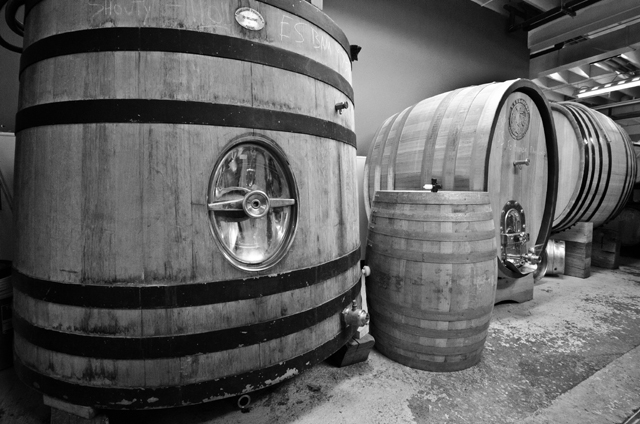
Reading your other interviews, knowing your beer and how you approach brewing, is it a stretch to compare your creative process to the theme and variation structure of jazz? I know its a cliché, but you have a set of core instruments, like the barrels and wild yeast, which you then manipulate and blend to produce different results with each new beer.
There’s quite a bit of house character that develops in the barrels that’s different from a brewery that’s fermenting in stainless steel tanks and force carbonating bottles. Your ability to be radically different from beer to beer is pretty easy. You can bring in a different yeast, malts and you can create a different beer, but when everything has to pass through the same barrels there’s not much you can do about that house character other then blending different aged beers that have different amounts of time in oak and even certain barrels that only hold a particular beer in them. You do get a lot of that house character which is the theme that runs through all of the beers.
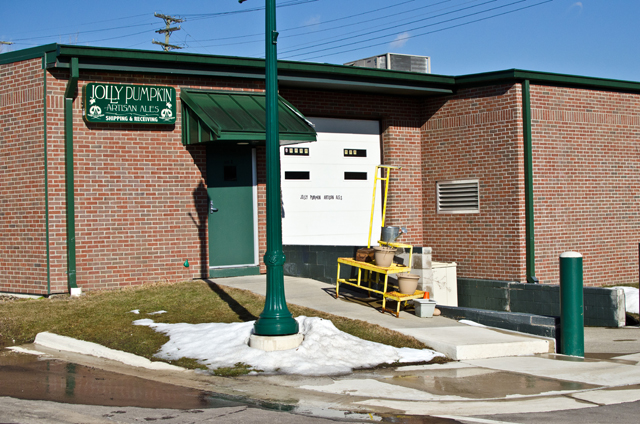
So it must be a challenge to work within the constraints of the house character?
Indeed it is and the other challenge is the time in the bottle. Because we don’t filter or pasteurize the beer continues to mature and develops more bottle character and more sourness. For example, when we package a beer like La Parcella it’s very different then what it tastes like six months later when a lot more of the brettanomyces and tartness emerges and the pumpkin and spice notes have dropped into the background. We’re working with number of different constraints, or I should say using them as we can.
We know the beer will be different in a year and I still get e-mails from people who are unhappy with a beer they’ve purchased that’s two years old in the marketplace. Its a little disheartening because you would like to think your beer is turning a little faster. It tends to be people who are not familiar with what there buying, meaning an oak aged sour beer. We bottle date so people should know they’re getting something from 2008.
Those reactions are a reminder that there’s so much more education that the consumers needs. You shouldn’t be buying that beer unless you really know what you’re getting. They should be complaining to the shopkeeper who can then explain why they’re trying to sell two year old beer and if they don’t, they should return it to the wholesaler.
There’s been a lot of talk about cellaring beer lately and I think it’s created some confusion. People are trying to figure out where to draw the line either by style or alcohol percentage. When do you prefer people consume your beer?
I like our beers with a little bit of time in the bottle so it can develop a little bit more of the brett character and more sourness that comes out in the bottle with carbonation. That additional fermentation creates more complexity. Six to eight months is ideal. After that the flavors tend to be influenced by oxidation and other staling reactions that occur naturally. A lot of people who are aging beers like those stale or old flavors, whether it’s a sherry note, which can be great, but its not present in the beer when its fresh. I’ve had some phenomenal three-year-old beers of ours but that’s rare. You never know though. The people cellaring are adventurous. They know they’re going into uncharted waters. It could be great, but it might not be.
A lot of brewers are choosing to can their beer and some are even putting Belgian style beers in them. Are you interested in using cans and do you think your beer could hold up in them?
First of all, I would have to find out what pressure the cans are rated to because the wild yeast will produce a lot more carbonation, especially when its aged for 2-3 years. That’s one concern. We do some non-sour brands in the facility and we’re considering canning for those brands.
Cans are great for a lot of reasons, but one thing I don’t like about them is the BPA in the liner. I think as people become more concerned about that here in the states and the US becomes more in line with Canada and Europe by banning it from food and beverage containers, I’m sure an alternative will be developed.
Where do you think the drive towards cans is coming from?
I think people see how well they sell and how much the consumers like them. You need sales and you want people to like what you do and right now cans are trendy and hot with consumers. Brewers see it and they want to do that. There are also real benefits to cans, like their weight and recycling, you can take them backpacking and on golf courses and all these places that didn’t have great beer before and now they do. That’s also why consumers like them. I don’t think brewers are saying “he’s doing cans so I need to be doing cans”. They see that cans are popular.
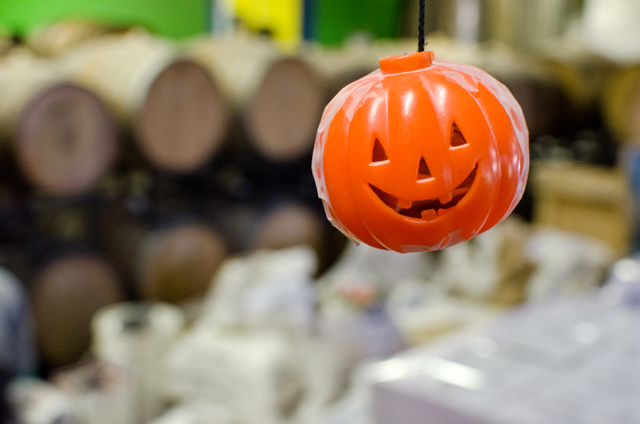
Is there environmental pressure in Michigan related to the drive towards canning?
There is pressure in Michigan, but not related to environmental reasons. The pressure is consumer driven. Michigan is an outdoorsy state. There’s tons of parkland and people do a lot of activities outdoors, like fishing, boating and hiking. The people interested in canning see an untapped market. A lot of beer aficionados don’t have much of a choice when it comes to cans. That’s one reason were looking at it to.
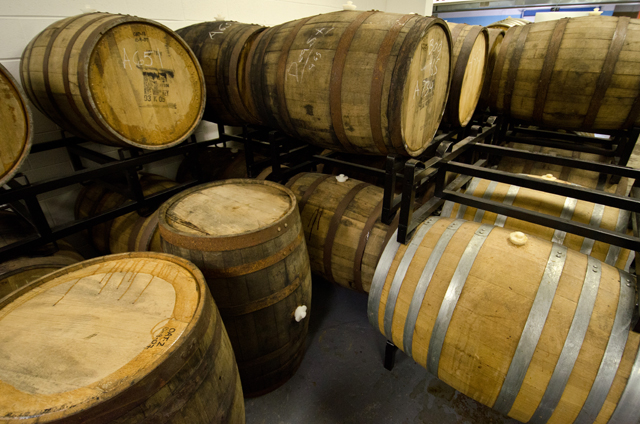
Speaking of outdoors activities, I noticed you like to shape surfboards. I know you can find waves around this state, but my audience might think its peculiar activity for a midwestern brewer. Can you talk a little about this interest?
Yes, there are waves in Michigan! I’ve always had a strong connection to the ocean and large bodies of water because of growing up in Michigan around the lakes. I became interested in long boarding because of that and then began shaping surfboards because it’s a craft that’s somewhat dying due to the inexpensive nature of mass produced boards.
I do other crafty things like roasting coffee and other things like that, so there’s this artisan thing that I was starting to enjoy as I learned more about long boarding and the surf board manufacturing industry and I saw how they were losing all these craftsman. It kind of bugs me when I see that happening. I wanted to keep that tradition alive, but also my son Daemon proposed a project in high school to build a surf board, so that gave me the opportunity to buy a couple blanks and we shaped our first surfboards.
It’s really challenging. I can only shape one day a week so I’m not getting super good at it. I use all hand tools so its tough at times, but it helps me connect to the water even when you can’t get there. It’s a long drive for us to reach the coast and shaping helps me think about places that I like, places that we’ve been, especially in the winter.
It’s also creative, but its creative in a different way then what I normally do with beer. Beer is very physical. I’m running around and I’m doing a lot of stuff. This is using my hands in a different way. I’m using a different creative section of my brain that’s not as developed because my hands and eyes haven’t really had to work together to make stuff.
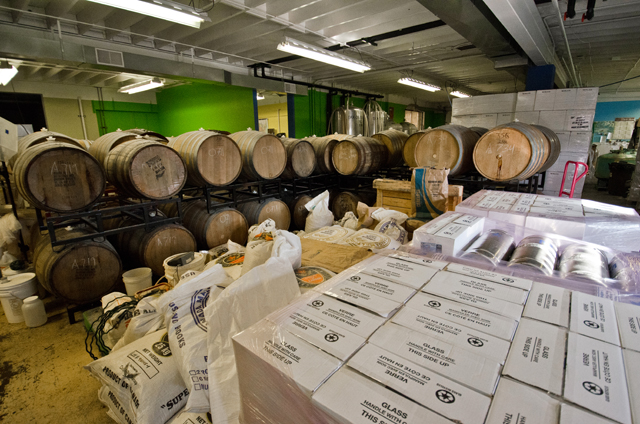
Is there any crossover or connection between brewing and shaping surfboards?
I’m sure its all connected, because everything creative thing you do is an assembly of all your experiences, things you’ve heard about, what you’ve seen and what you’ve done so I’m sure there’s a lot of crossover there. I’m an active person. A physical person and one of the reasons I like small breweries is because I’m physically active all the time and shaping surfboards is just a different way.
As a business owner you’re often going in a hundred different directions at once. You’ve got six screens open on your computer, your trying to brew a batch of beer, your answering phone calls, trying to coordinate shipments going out and shaping surfboards requires you to focus in on exactly what your doing because as you shape the board down it gets softer and softer and easy and easier to screw it up, at least for me. It really requires you to block everything out and focus on what your doing.
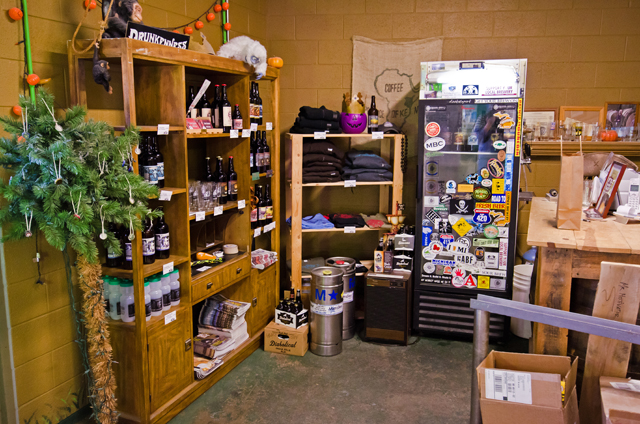
Do any winter surfing?
No I don’t. People tease me about that all the time, but even though I was born in Michigan I didn’t get the same blood that everyone else must have because I’m a warm weather guy. We go out in the summer and most of the time we paddle board, which we love doing.
